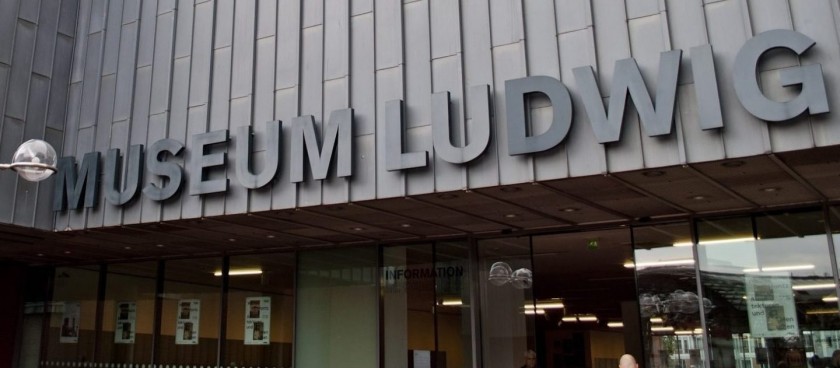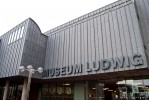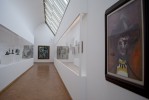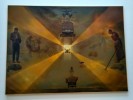- #DE40
- Heinrich-Böll-Platz, 50667 Köln, Germany
- +4922122126165
- info@museum-ludwig.de
- http://www.museenkoeln.de/museum-ludwig/
- Working hours*:
Tue-Sun from 10 am to 6 pm, closed on Monday - Prices*:
A cost of an adult ticket is 10 EUR, a child ticket is 7 EUR. - * - opening and closing times as well as entrance prices, are subject to alterations without notice. Visitors are advised to check before visiting.
- 50.9408472, 6.9602203 Copy to clipboard Copy
-
#Museums
The Ludwig Museum in Cologne is a modern building; it is four floors of art. It is a decent collection of expressionism, contemporary art and pop art. It is an extensive collection of works by Picasso. It is a worthy collection exhibition of photographs and much more.
The museum's history began in 1946 when the lawyer Josef Haubrich donated his collection of paintings to the city immediately after the end of the Second World War. Suddenly, many paintings by "degenerate" artists, who were considered missing or destroyed, found their home in Cologne. Thus, Hobrich initiated the creation of this museum.
Thanks to his generous donation, the Ludwig Museum now houses one of the most significant Expressionist collections in Europe, including examples of New Objectivity and other tendencies of classical modernism.
In the 1920s, Haubrich began collecting works by contemporary and predominantly German artists, such as Otto Dix's Portrait of Dr Hans Koch, 1921; The Dreamers by Emil Nolde 1916; and Ernst Ludwig Kirchner's famous Female Nude with Hat, 1911, which was exhibited at the Venice Biennale back in 1925.
The Ludwig Museum also houses a collection of works by Max Beckmann inherited from Lilly von Schnitzler.
Expansion of the collection and Ludwiga
In 1958, the museum acquired the Willi Strecker collection, which consisted, among others, of significant works by Pablo Picasso, Henri Matisse, Oskar Kokoschka and Paul Klee.
Between 1976 and 1988, Günther and Carola Peill also donated a significant portion of their collection (paintings and graphics by Max Ernst, Alexei von Jawlensky, Willi Baumeister, Ernst Wilhelm Nay.
In 1976, another significant donation to the city rocked the public. Collectors Peter and Irene Ludwig donated their collection of American pop art to Cologne because a separate independent museum built for the cause.
In 1986, a new museum was opened, which initially consisted of two - the Ludwig Museum and the Wallraf-Richartz Museum.
In 1994, the Ludwigs donated 19 more works by Pablo Picasso to the museum because the Wallraf-Richartz Museum moved to a separate building.
The reopening of the museum took place on November 1, 2001, and Irena Ludwig celebrated this event by donating another 774 works by Pablo Picasso.
The Ludwig Museum now houses the most significant pop art collection outside the United States. The following artists can found here: Roy Lichtenstein, Andy Warhol, Claes Oldenburg, James Rosenquist, Robert Rauschenberg and Jasper Johns.
Ludwig Museum in Cologne and Pablo Picasso
Separately, it is worth noting the collection of works by Pablo Picasso, the third-largest in the world after Paris and Barcelona. It includes not only paintings that cover all periods of the artist's work, for example, "Harlequin" (1923) and "Woman with an artichoke" (1941), but also numerous ceramic objects and sculptures - "Woman with a stroller" ( 1950), the monumental head of Dora Maar and many others.
In addition, only here you can find all three cycles of graphic works by Picasso - Suite Vollard (Vollard Suite, 1930-1937), Suite 345 (Suite 345, 1968) and Suite 156 (Suite 156).
For Picasso lovers - a natural paradise! Thanks to the museum's collection, you can see how his work has developed over the years. All these cubic manners, piecey faces and bodies have gone already at an age.
How to get to the Ludwig Museum
Subway Dom / Hauptbahnhof









